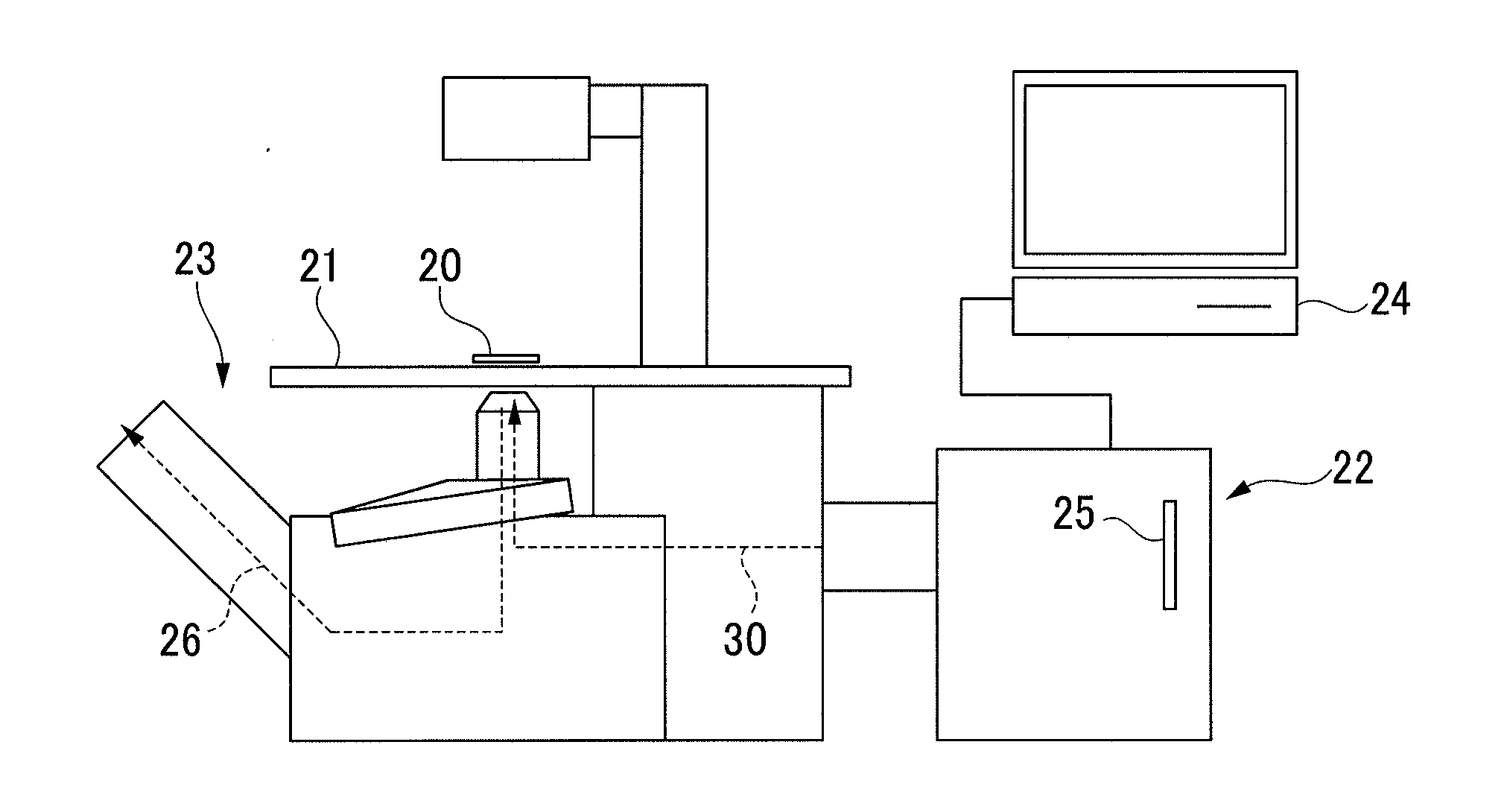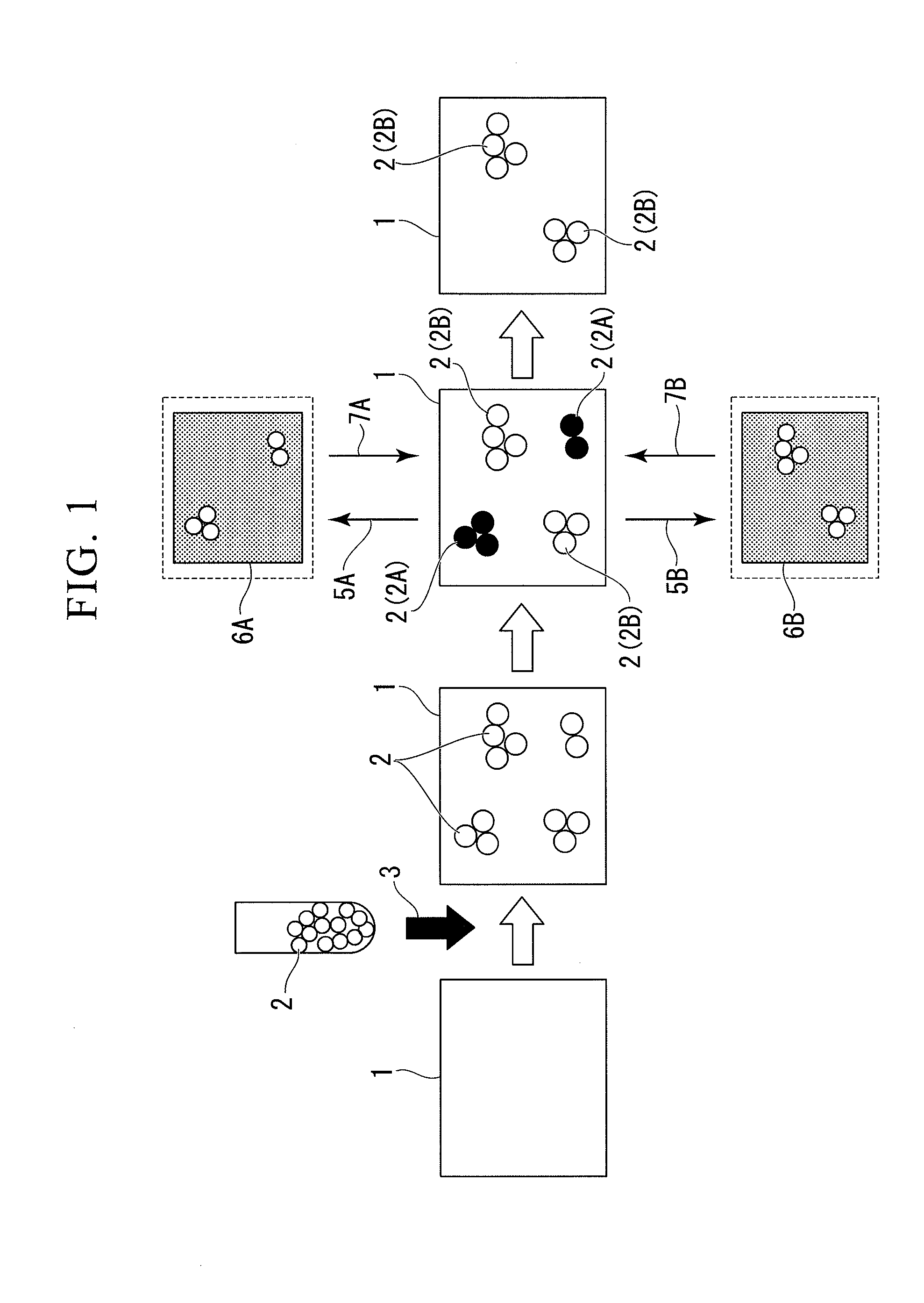Method for separating cells, cell culture substrate, and device for separating cells
a cell culture substrate and cell technology, applied in the field of separating cells, can solve the problems of cell adhesion factor or extracellular matrix damage by enzyme treatment, cell damage, etc., and achieve the effect of good precision and without adversely affecting these target cells
- Summary
- Abstract
- Description
- Claims
- Application Information
AI Technical Summary
Benefits of technology
Problems solved by technology
Method used
Image
Examples
example 1
[0164]A solution containing the compound (1) (NAI-106, manufactured by Midori Kagaku Co., Ltd.) was applied to the surface of a substrate composed of polystyrene and then dried to form a layer containing the compound (1), and a gelatin layer was then formed on top. This yielded a cell culture substrate 1 having a layer containing the compound (1) and a gelatin layer provided on top of the surface of the substrate.
[0165]The surface of the substrate 1 was inoculated with MDCK cells across the entire surface of the substrate.
[0166]Subsequently, ultraviolet rays (wavelength: 365 nm) were irradiated (irradiation energy: 6 J / cm2) onto only a partial region of the substrate 1 (see FIG. 1), while the substrate 1 was observed using a microscope 23 illustrated in FIG. 2.
[0167]The results of performing Live / Dead staining, which fluorescently stains live cells green and dead cells red, confirmed that only the cells within the irradiated region were killed.
examples 2 to 4
[0168]A cell culture substrate 1 having a layer composed of PMMA containing the compound (1) on the surface of the substrate was inoculated with one type of cell selected from among MDCK cells (example 2), Hek293 cells (example 3) and NIH / 3T3 cells (example 4), and ultraviolet rays (wavelength: 365 nm) were then irradiated onto only a partial region of the cell culture substrate. The remaining conditions were the same as those described for the example 1.
[0169]The results of performing Live / Dead staining confirmed that only the cells within the irradiated region were killed.
examples 5 and 6
[0170]A cell culture substrate 1 having a layer composed of PMMA containing the compound (2) on the surface of the substrate was inoculated with one type of cell selected from among CHO-K1 cells (example 5) and NIH / 3T3 cells (example 6), and a visible light (wavelength: 436 nm) was then irradiated onto only a partial region of the cell culture substrate. The remaining conditions were the same as those described for the example 1.
[0171]The results of performing Live / Dead staining confirmed that only the cells within the irradiated region were killed.
PUM
| Property | Measurement | Unit |
|---|---|---|
| pKa | aaaaa | aaaaa |
| wavelength | aaaaa | aaaaa |
| wavelength | aaaaa | aaaaa |
Abstract
Description
Claims
Application Information
 Login to View More
Login to View More - R&D
- Intellectual Property
- Life Sciences
- Materials
- Tech Scout
- Unparalleled Data Quality
- Higher Quality Content
- 60% Fewer Hallucinations
Browse by: Latest US Patents, China's latest patents, Technical Efficacy Thesaurus, Application Domain, Technology Topic, Popular Technical Reports.
© 2025 PatSnap. All rights reserved.Legal|Privacy policy|Modern Slavery Act Transparency Statement|Sitemap|About US| Contact US: help@patsnap.com



